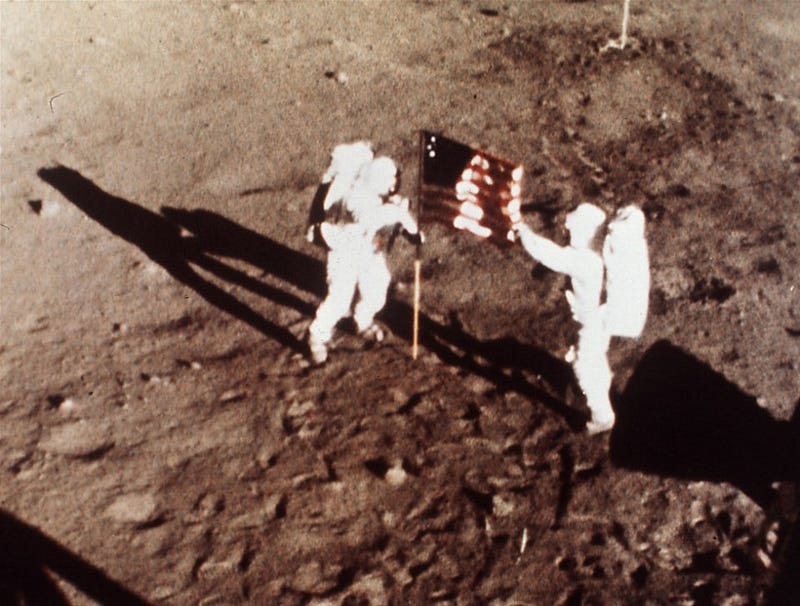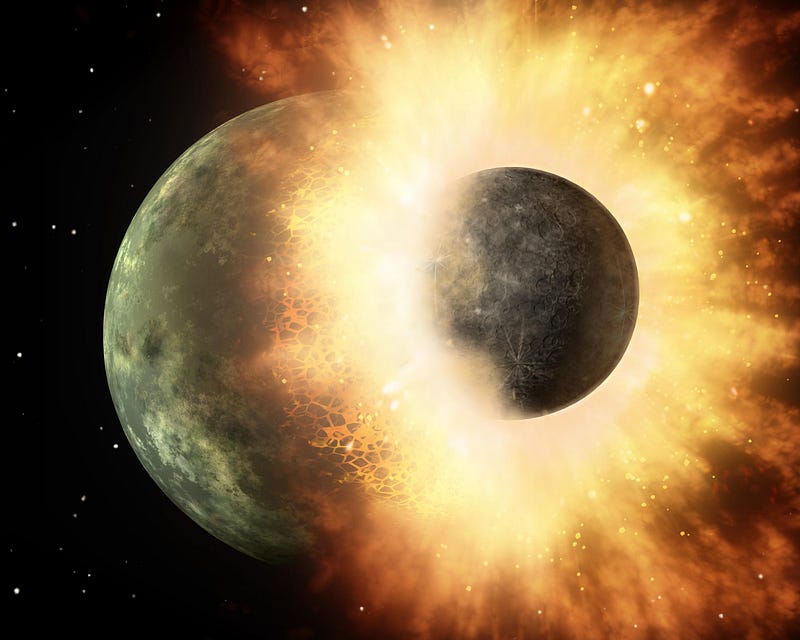Mini-Movie Monday: Genesis Episode 6, The Moon
In the story of where all this comes from, our closest world was a mystery for millennia. But now we know!
“But even when the moon looks like it’s waning…it’s actually never changing shape. Don’t ever forget that.” –Ai Yazawa
The Universe is full of objects large and small, near and far, well within our reach and far beyond what we’d be able to probe even at the speed of light. Which is why, perhaps, it’s so puzzling that for practically all of human history, the largest, nearest object in the skies — the Moon — was a total mystery.

Yes, we could describe it, learn how it affects us, measure it and even walk on it, but understand where it came from? That didn’t happen until very recently.

And yet, now we know. Come learn the story of where the Moon comes from, as well as how we know it, on our latest video in the story of where all this comes from!
Transcript
Of everything we can see in the night sky, the Moon is by far the brightest and most prominent. Lighting up the skies as bright as all but the largest cities, it’s responsible for a number of important phenomena here on Earth, including eclipses, our tides, and perhaps most importantly, stabilizing our axial tilt.
Not every world has a large, nearby world like ours does. In fact, of the eight planets in our Solar System, ours is the only one that has something orbiting it that’s almost comparable in diameter. So why is this? Of all the planets we have, how come we have such a large Moon, and why doesn’t anyone else?
To answer this, we have to go way back to when our Solar System was first forming from a protoplanetary disk. At the center, the largest, massive clump would eventually grow into our Sun, fusing light elements into heavier ones in its core. But all around it was a dusty, rocky disk, spinning around our star the way the giant rings of ice particles orbit Saturn.
But this disk had tiny imperfections in it: places where a little more matter than usual would gather, and these would become the seeds of what would grow into planets. In some cases, these seeds weren’t so tiny. Since gravitation works by attracting even more stuff the larger you are, the largest imperfections grew into Jupiter, Saturn, and the other gas giant worlds in our Solar System.
But in the inner Solar System, all the fluctuations were smaller, and took longer to grow. Many of these early, micro-worlds wound up merging together rather quickly, most likely giving rise to early versions of Mercury, Venus, Earth and Mars after only a few million years. But unlike our three neighboring worlds, we think there was something unique about Earth: there was another, smaller world in our same orbit — a world we’ve named Theia — only offset by nearly a hundred million miles.
After some fifty million orbits around the Sun, Theia and Earth collided, merging together but kicking up a giant cloud of debris from Earth’s outer layers. That debris wound up coalescing into the Moon.
This might seem far-fetched, but there are a few pieces of evidence that would verify this theory. One is if the elemental composition of the Moon was identical to the rocks we find here on Earth, something that wouldn’t be true unless the Moon was formed from the Earth itself. And another is if the far side of the Moon — the one that always faces away from us — was vastly different from the side we see, since the heat radiating from our young planet could alter the crustal thickness on the Moon’s near side.
As it turns out, we see both of these things, something we’ve been able to verify by going to the Moon, studying it and even bringing Moon rocks back here to Earth. Unlike all the other worlds in our Solar System, the Moon is made of the exact same stuff we are! And after millennia wondering where our giant, luminous companion came from, we’ve at last solved the mystery of where the Moon, our closest neighboring world, fits in, in the story of where all this comes from.
Leave your comments at the Starts With A Bang forum on Scienceblogs!





